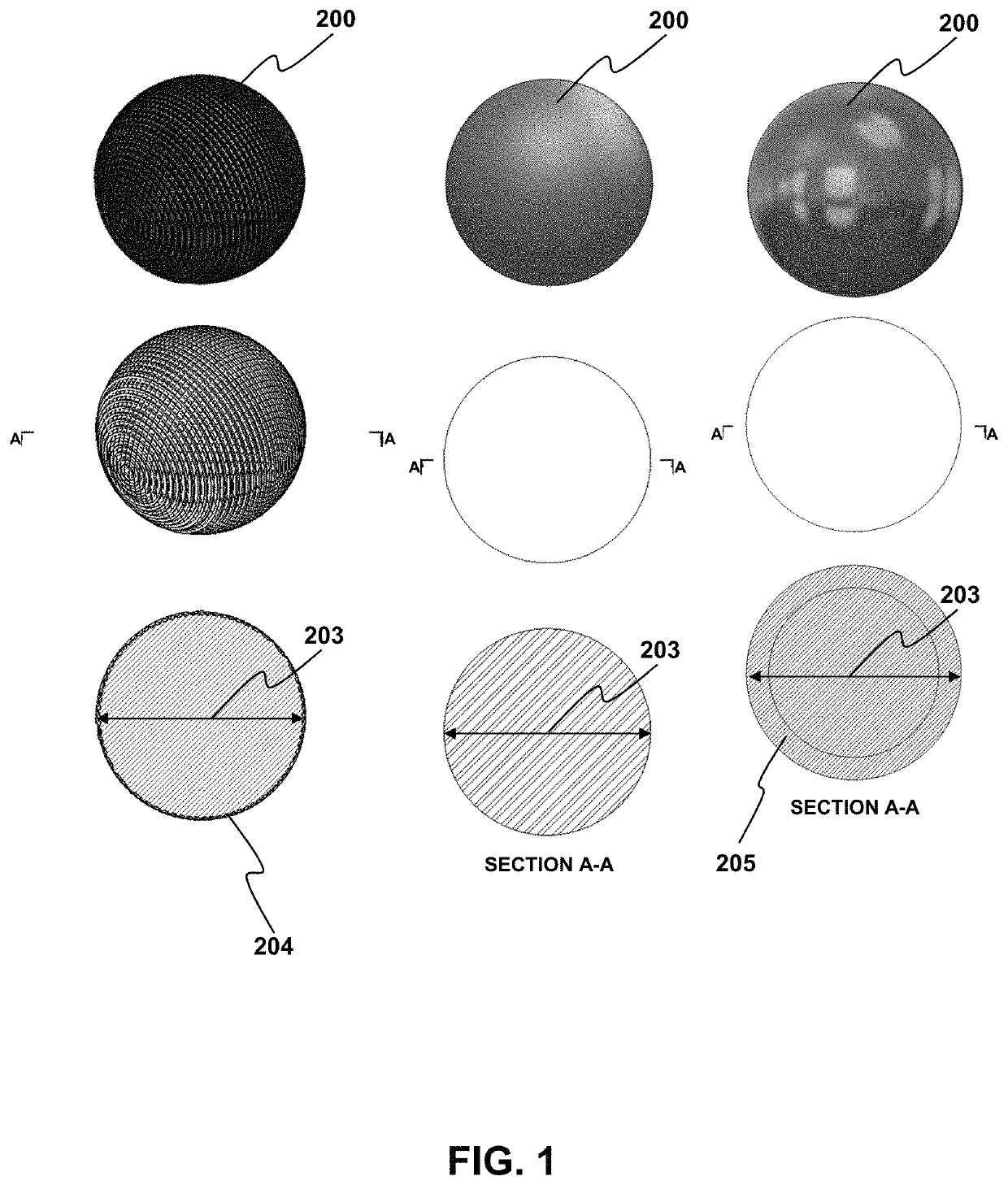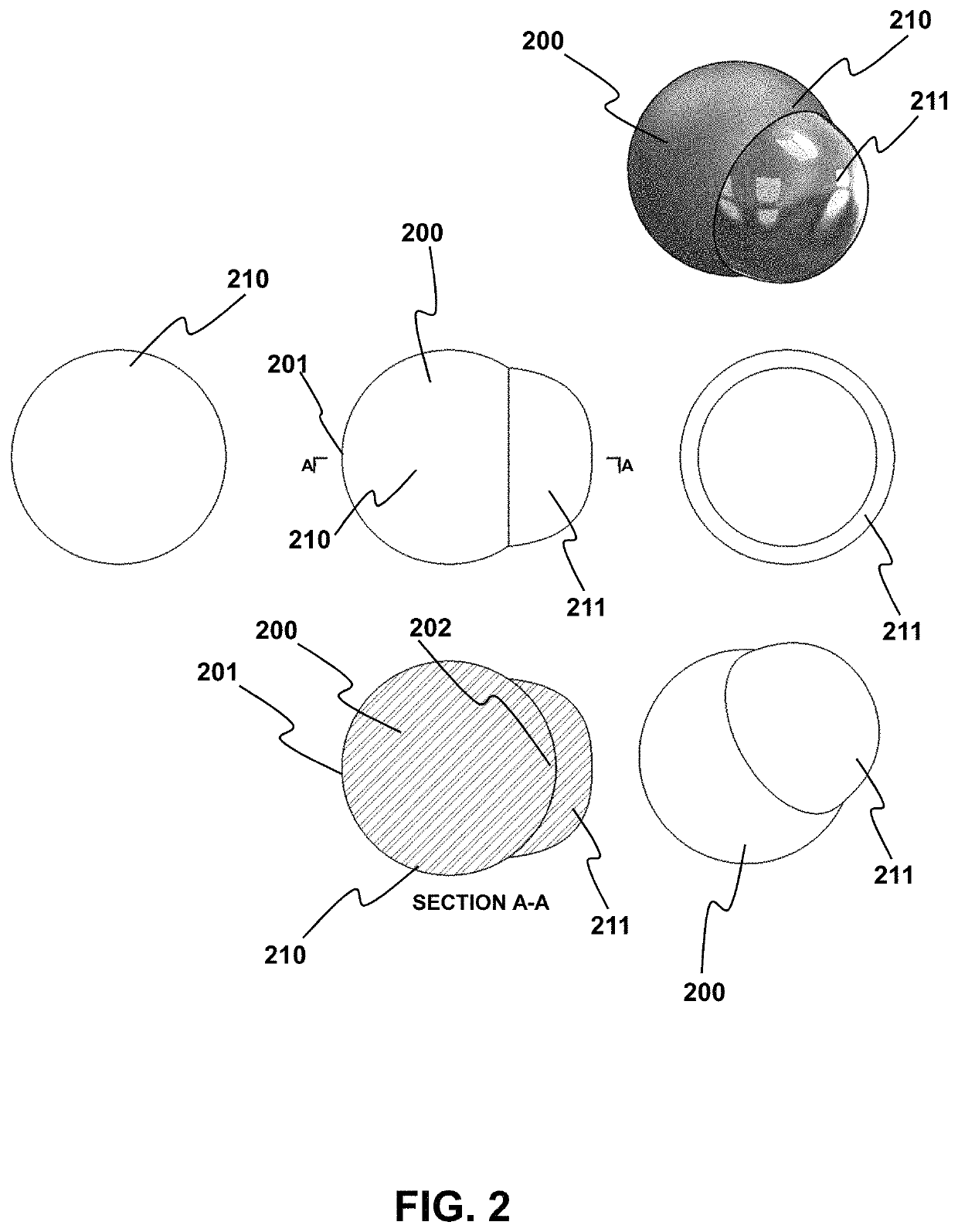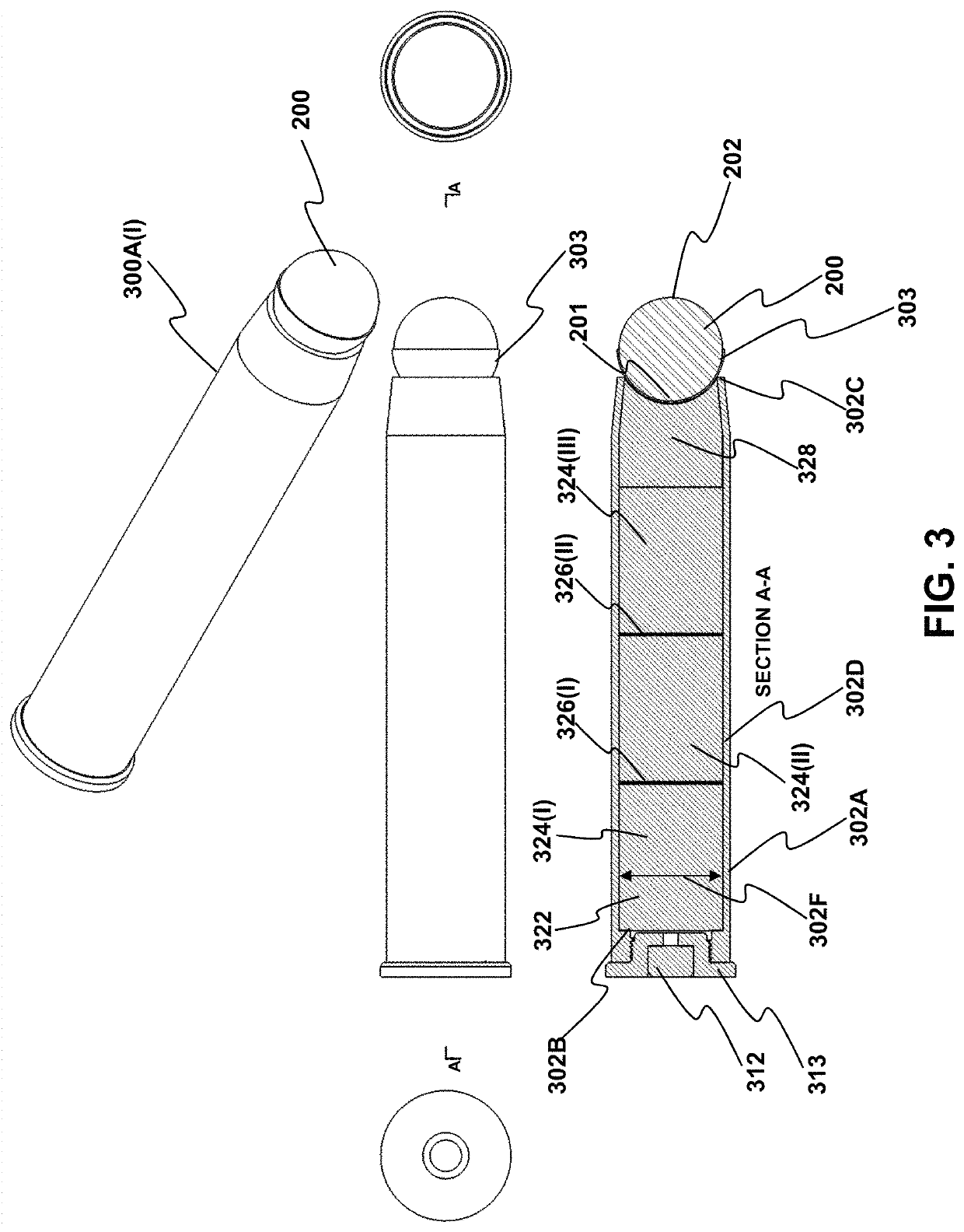Rounded projectiles for target disruption
a technology of projectiles and target disruption, applied in the direction of projectiles, ammunition projectiles, weapons, etc., can solve the problem of not being practicable, or even possible, to achieve a perpendicular shot on targ
- Summary
- Abstract
- Description
- Claims
- Application Information
AI Technical Summary
Benefits of technology
Problems solved by technology
Method used
Image
Examples
example 1
rojectile (RP) Description
[0098]Described in this example are embodiments of a rounded projectile (RP), such as RP 200, which is also interchangeably referred to herein as a Supersphere (or supersphere). Also described are projectile cartridges, such as projectile cartridge 300A, having rounded projectiles, or Superspheres, and method of using these. The Supersphere, is an interchangeable disrupter / dearmer spherical projectile and cartridge system for precise disablement of an explosive device, such as explosive device 120, or ordnance structural components. A spherical shape is stable in flight and cannot pitch, yaw, tumble, nor wobble, all of which cause projectiles to veer off a trajectory. Superspheres (i.e., RPs) described herein are designed to be accurate after perforating single or multiple barriers and precisely destroy fuzing components or structures of interest inside of an improvised explosive device (IED) or military ordnance. Alternatively, they can be used in breachin...
example 2
rojectile as a Fluid Plug
[0124]Any of the rounded projectiles provided herein may be used to seal a distal end of fluid, such as water, that is positioned in a disrupter barrel. In this manner, the rounded projectile acts as a cap to ensure the fluid does not leak out of the barrel. A preferred rounded projectile is a synthetic rubber spherical ball that is of sufficiently high strength such that the ball can withstand the exerted forces during use without visible damage. In this manner, the rounded projectile plus ReVJeT configuration (e.g., water in a portion of the barrel) provides a number of important functional benefits, including the ability to reliably penetrate a larger barrier layer thickness, good performance at a greater standoff distance, and a reduced risk of impact initiation of explosives in an IED. For at least these reasons, it is advantageous to use a rounded projectile as an improved water seal (e.g., “hydrosphere”) for disruption of medium to hard shell (barrier...
example 3
ngle of Attack on Target
[0128]In real-world situations, it is not realistic to always have an exact perpendicular line of attack between the liquid jet and solid projectile relative to the target, as illustrated in FIG. 24.
[0129]Schematic illustrations of impact mechanics for a perpendicular and oblique angle of attack are provided in FIGS. 26-31 and 32-39, respectively. Illustrated is a rounded projectile, barrier layer, desired contact point internal relative to the barrier layer. The trajectory of the rounded projectile (RP) is indicated by the arrow, with D representing the distance between the internal surface of the barrier layer and point of aim within the target.
[0130]FIG. 26 illustrates the RP with a perpendicular pre-impact trajectory.
[0131]FIG. 27 illustrates the RP initial impact with the barrier layer, where the impact pressure exceeds the barrier layer material's elastic-plastic limit, thereby forming a channel inside the barrier layer that effectively “guides” the RP ...
PUM
 Login to View More
Login to View More Abstract
Description
Claims
Application Information
 Login to View More
Login to View More - R&D
- Intellectual Property
- Life Sciences
- Materials
- Tech Scout
- Unparalleled Data Quality
- Higher Quality Content
- 60% Fewer Hallucinations
Browse by: Latest US Patents, China's latest patents, Technical Efficacy Thesaurus, Application Domain, Technology Topic, Popular Technical Reports.
© 2025 PatSnap. All rights reserved.Legal|Privacy policy|Modern Slavery Act Transparency Statement|Sitemap|About US| Contact US: help@patsnap.com



